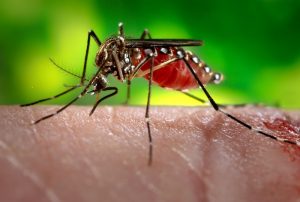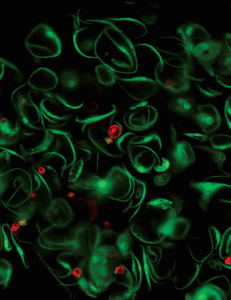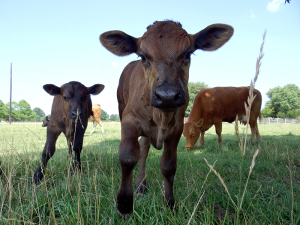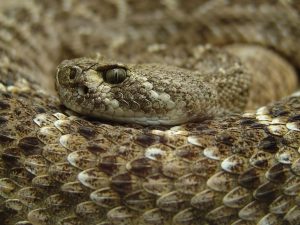Enter your address to receive notifications about new posts to your email.
Science & Publishing
-
Science & Publishing
Fast-evolving female-biased genes defy expectations in mosquitoes
Genes involved in male reproduction tend to evolve rapidly. This has been observed in many different species and is thought to be due to sexual selection as males compete over mating opportunities. But in the August issue of GENETICS, Whittle and Extavour present results that flip this paradigm upside down. They find that in the…
-
Science & Publishing
Revisiting Waddington: A new explanation for an old experiment
In the 1940s, C. H. Waddington discovered a peculiar phenomenon in fruit flies: traits could appear in response to environmental stress in an individual’s lifetime and then be passed down to future generations. Waddington proposed that this wasn’t the inheritance of acquired traits, but actually due to pre-existing genetic variation that had no effect until…
-
Science & Publishing
New in G3: Yorkie signaling, rice hybrid incompatibility, and a wasp genome
Check out the August issue of G3! Table of Contents Genome Reports Whole Genome Sequencing of the Braconid Parasitoid Wasp Fopius arisanus, an Important Biocontrol Agent of Pest Tepritid Fruit Flies Scott M. Geib, Guang Hong Liang, Terence D. Murphy, Sheina B. Sim G3: Genes, Genomes, Genetics August 2017 7: 2407-2411; DOI: https://doi.org/10.1534/g3.117.040741 Comparative Genomics of Two Sequential…
-
Science & Publishing
Lineage specific retrotransposons shaped the genome evolution of domesticated rice
Rice is one of the most important food crops on earth. Like many other plants, the genome of this critical global species is dominated by transposable elements—selfish genes that multiply themselves to the detriment of their host. In the June issue of G3, Zhang and Gao analyze the genomic long terminal repeat (LTR) retrotransposon content…
-
Science & Publishing
August GENETICS Highlights
Check out the August issue of GENETICS by looking at the highlights or the full table of contents! ISSUE HIGHLIGHTS Evolving Mistranslating tRNAs Through a Phenotypically Ambivalent Intermediate in Saccharomyces cerevisiae, pp. 1865–1879 M. D. Berg, K. S. Hoffman, J. Genereaux, S. Mian, R. S. Trussler, D. B. Haniford, P. O´Donoghue, and C. J. Brandl It is increasingly apparent that the…
-
Science & Publishing
Learning to peer review
GENETICS Editor-in-Chief Mark Johnston introduces a new peer review training program for early career scientists. “Just tell them what you think of them.” That was the response of one of my mentors when I asked him how I should review grant applications. I was a newly-minted Assistant Professor and had been asked to sit on an NIH study section. I…
-
Science & Publishing
To make an embryo, you gotta break some mitochondrial DNA
Over twenty years ago, somatic cell nuclear transfer (SCNT) let scientists successfully clone the first mammal—Dolly the sheep. Despite advances since then, the efficiency of this process remains low. In the July issue of G3, Srirattana and St. John report a method to deplete cattle donor cells of mitochondrial DNA and efficiently generate blastocysts from…
-
Science & Publishing
Venom holds clues to triggers of gene family expansion
They rattle as warning, but during the hunt their strike is silent and sudden. Any rabbit or mouse targeted by a rattlesnake is doomed—the snake’s bite carries a paralyzing venom. The toxins in this venom are proteins encoded by a large gene family that arose by gene duplication. In the July issue of GENETICS, Margres…
-
Science & Publishing
Germline immortality in C. elegans depends on epigenetic inheritance
Inheriting a trait from a grandparent doesn’t always involve their DNA sequences. In many organisms, some traits can be passed down for multiple generations via non-sequence based mechanisms, a phenomenon called transgenerational epigenetic inheritance. The most familiar example is that human disease risk might be influenced by the lifestyle of a person’s grandparents. But by…
-
Science & Publishing
Publish your software and data resources in G3!
Geneticists increasingly depend on highly specialized software and databases. Although it is vital to the field that these resources be well documented and their benefits widely disseminated, reports of new software and databases don’t always fit the mold of a typical research paper. The structure of a conventional research article forces authors to present their…
-
Science & Publishing
July GENETICS Highlights
Check out the July issue of GENETICS by looking at the highlights or the full table of contents! ISSUE HIGHLIGHTS The nucleoporin Nup2 contains a meiotic-autonomous region that promotes the dynamic chromosome events of meiosis, pp. 1319-1337 Daniel B. Chu, Tatiana Gromova, Trent A. C. Newman, and Sean M. Burgess Chromosomes are organized in the nucleus to accommodate multiple functions.…











